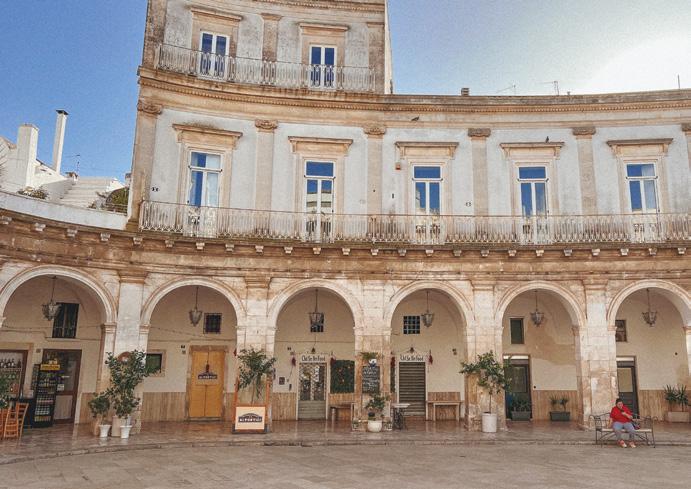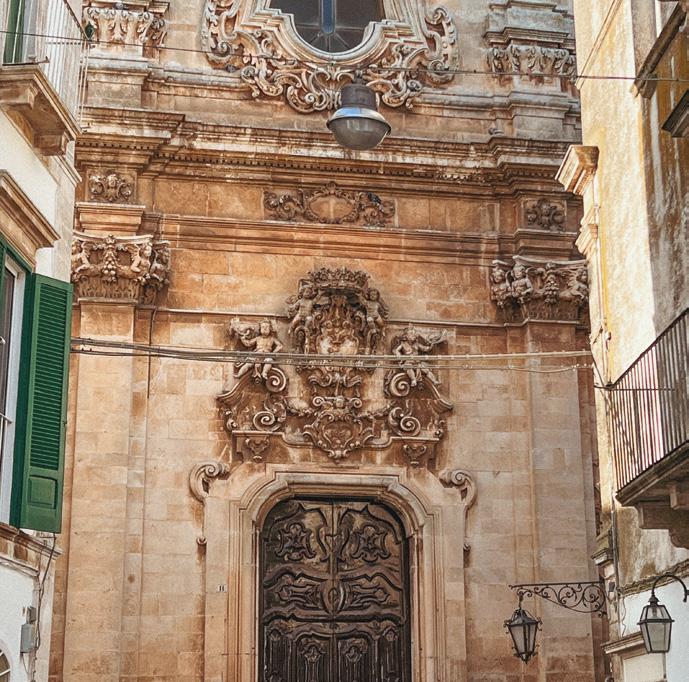
10 minute read
LUOGHI – PLACES
Nel paese dei barocchi
In the land of Baroque
¬ Alessandra Minervini
C’È UNA CITTADINA CHE DA SECOLI ACCOGLIE E PROTEGGE I VISITATORI FUORI DALLE ROTTE DEL TURISMO DI MASSA. MARTINA FRANCA, NEL CUORE DELLA VALLE D’ITRIA, REGALA EMOZIONI ANCHE IN PIENO INVERNO. PASSEGGIARE TRA LE SUE STRADE, GUIDATI DALLA LUCE DEL SOLE CHE ILLUMINA LE CHIANCHE E DAL PROFUMO DI ARROSTO CHE IMPREGNA I PANNI STESI, È UN’ESPERIENZA SENSORIALE.
There is a town which isn’t a destination of mass tourism but which has been welcoming and protecting visitors for centuries. Martina Franca, in the heart of the Itria Valley, offers unforgettable experiences even in the middle of winter. Walking through its streets, guided by the sunlight that illuminates the way paved in “chianche”, a traditional white stone, and by the scent of roasted meat that penetrates the clothes on the washing lines is an intense sensory experience.
Ogni angolo della Valle d’Itria contiene una funzione preziosa di “riparo“. I paesi e le contrade che circondano la valle sono un riparo naturale, un rifugio esaltato dal candore del cielo che si infrange sugli scorci collinari e sulle pareti bianche delle antiche case nobiliari così come delle palazzine più popolari. Martina Franca, uno dei primi luoghi a essere ammirato dai visitatori, è una zona “franca“ nel senso di posto dove rifugiarsi dai soliti panorami per sentirsi circondati da una bellezza inconsueta. Ma anche nel senso storico del termine.
Nel X secolo sul Monte di San Martino, una collina sulla Murgia a circa 500 metri dal livello del mare, sorse un villaggio di profughi tarantini in fuga dalle continue devastazioni dei
saraceni. Qualche tempo dopo, nel 1300, il villaggio fu ampliato da Filippo d’Angiò, Principe di Taranto, che favorì lo stanziamento concedendo agli abitanti delle franchigie. L’episodio diede origine al nome della cittadina denominata “Franca“ per il privilegio concesso ai suoi abitanti e “Martina“ in onore di San Martino, patrono della Cavalleria Francese. L’origine di Martina (è così che viene chiamata da chi ci abita, in segno di affettuosità) è dunque riparare e accogliere. Una sensazione che si ritrova anche oggi, passeggiando tra le strade della regina del barocco.
Continua >
There is a place of shelter providing protection in every corner of the Itria Valley. The villages and the streets surrounding the valley provide a natural shelter, a form of refuge set against the backdrop of the clear blue sky and the splendid white-washed walls of the ancient noble houses and buildings. Martina Franca, one of the first places to be admired by visitors, is a place to take refuge from the usual common sights and to feel surrounded by an exceptional beauty. But also, in the historical sense of the term.
In the 10th century, on Monte di San Martino, a hill on the Puglian Murge about 500 metres above sea level, a village was built by refugees from the city of Taranto who had fled the unyielding devastation caused by the Saracens.
At a later stage, in 1300, the village was expanded by Philip of Anjou, Prince of Taranto, who was in favour of this new settlement and granted the inhabitants permission to reside there. This event resulted in the town being called “Franca“ meaning free due to the privilege granted to its inhabitants and “Martina“ in honor of Saint Martin, the patron saint of the French Cavalry. The conception of Martina (this is how the town is referred to by those who live there, as a sign of affection) was based on providing refuge and welcoming others. This feeling is still valid today and can be found by walking through the town’s magnificent streets brimming with baroque architecture at every corner.
Continues >
Non appena si oltrepassa uno dei varchi storici, per esempio l’Arco Valente, che delimita il confine tra il paese nuovo e quello vecchio, si viene accolti dall’elemento più caratteristico: la luce. Passeggiare a Martina guidati dalla luce del sole che illumina le chianche, le caratteristiche pietre lisce che pavimentano i vicoli antichi, esalta tutti i sensi. La vista si perde nel bianco
barocco delle chiese, delle piazze, dei palazzi storici; la luce diventa un sentiero da seguire per scoprire il paese dei barocchi.
La facciata del Palazzo Ducale, in piazza Roma, ha il primato del barocco. Divisa orizzontalmente da una balconata in ferro battuto, opera dei maestri locali, risalta agli occhi per i ricami e gli intrecci della pietra, dove pinnacoli e intarsi creano vere e proprie storie seriali. Una serialità barocca conquista gli sguardi anche nella basilica di San Martino, patrono locale. Qui le statue della Carità e dell’Abbondanza e le sculture del Volto della Sindone, opera di Giuseppe Sanmartino, rappresentano l’apice dell’imponenza artistica barocca. As soon as you pass through any one of the historical arches, for example the Arco Valente which divides the old town from the new, you are immediately struck by the town’s main characteristic: light. As you walk through Martina guided by the sunlight illuminating the “chianche“ (local white stones) that pave the ancient alleyways and lanes, all your senses are stimulated. You are dazzled by the
whiteness of the baroque architecture of the churches, squares, historic buildings. The light becomes a kind of path to follow in order to discover this Baroque town.
The façade of the Palazzo Ducale, in Piazza Roma, holds the record for Baroque style. The top part is divided from the bottom by a wrought iron balcony which has been expertly crafted by local artisans. The ornateness and the complex laying of the stone immediately grabs your attention and their spires and inlays follow each other in a clear sequential order. You also can’t help but notice the magnificent baroque architecture boasted by the basilica of Saint Martin, the local patron saint. Here the statues of Charity and Abundance and the “Volto della Sindone“ sculptures by Giuseppe Sanmartino, represent the pinnacle of Baroque artistic talent.
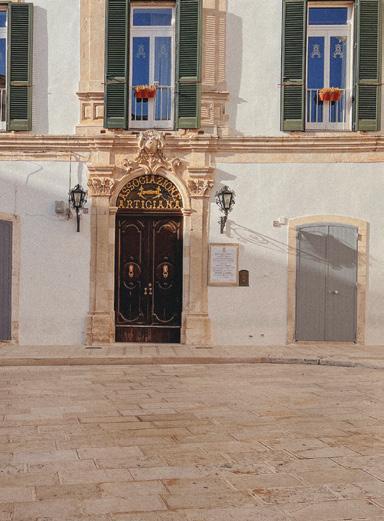
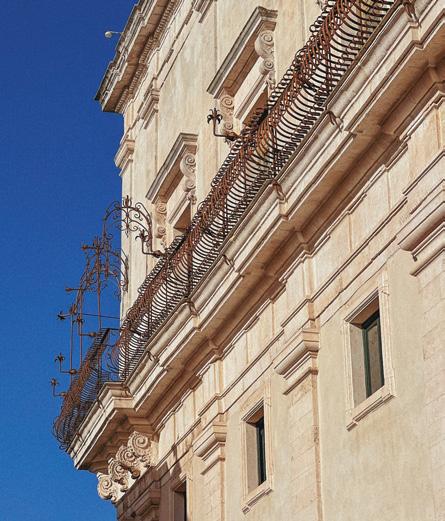
L’arteria principale per il passeggio è Corso Vittorio Emanuele, ma per non perdersi scorci inattesi, è meglio alternare i passaggi all’interno dei monumenti principali con brevi e casuali sortite tra i vicoli e le piazzette minori, dove la gente del posto vive. Ci si potrà sentire inondati dagli odori tipici come il
profumo dell’arrosto che viene via dalle case basse con le porte semi aperte e si posa, un po’ sbruffone, sui panni stesi nei balconcini che attirano gli scatti
instagrammabili dei passanti. Durante il passaggio tra i vicoli, è obbligatoria una sosta in piazza Maria Immacolata, passando per Palazzo Fanelli, dopo aver percorso i dintorni di via Cavour. Le tracce contemporanee della bolla storica di barocco investono chi la visita. La piazza è il simbolo del paese, con la sua forma concava assomiglia a una gigantesca conchiglia di mare, approdata sulla terra per riparare gli abitanti. The town’s main thoroughfare is Corso Vittorio Emanuele, but in order not to miss out on any surprising sights it is better to combine walks taking in the main monuments with short meanderings through the alleyways and smaller squares, where the locals reside. You can breathe
in the town’s delicious smells such as the scent of a roast emanating from houses with their doors half open and permeating the clothes hanging from the balconies which make perfect Instagram
material for passers-by. Having wandered through the narrow streets and lanes, passing by Palazzo Fanelli, and exploring the surroundings of Via Cavour, an obligatory break must be taken in Piazza Maria Immacolata. Anyone who visits this place can’t help but be amazed by its contemporary style in such a baroque setting. The square is the symbol of the town, with its concave shape resembling a giant seashell which has come ashore to provide shelter for the inhabitants.
Continua > Continues >
Un’altra sosta obbligata è il centenario Caffè Tripoli che, forse, all’estero è già conosciuto per essere stato la scenografia di una celebre fotografia di Ferdinando Scianna con l’attrice siciliana
Maria Grazia Cucinotta per il calendario Lavazza. Una fermata obbligata in un luogo storico, dove tra un caffè e un bocconotto di ricotta e pera, si ammira il passeggio più tradizionale, durante le lunghe domeniche estive. Sempre in estate, di solito tra luglio e agosto, la passeggiata a Martina diventa ancora più multisensoriale. Opere e operette contemporanee o più tradizionali allietano il soggiorno dei visitatori. La presenza del prestigioso Festival della Valle d’Itria, eredità del celebre impresario Paolo Grassi, originario della città, restituisce a Martina un aspetto caratteristico, non meno riparo degli altri, ovvero quello di “salotto a cielo aperto“.
Martina Franca è un luogo sincretico, unisce più punti di vista. Passeggiare seguendo un percorso prestabilito non restituisce verità alla sua bellezza. Il percorso va vissuto a caso, passando da un luogo a un altro, da un angolo che sblocca un ricordo a un dettaglio sconosciuto come la Posterla, una porticina segreta e stretta, visitabile all’altezza di via Pisterola, che consente il passaggio di una sola persona per volta, e che è stata cruciale nel sistema difensivo della città ai tempi degli angioini. Che sia un angolo microscopico, una piazza intrecciata ai principali Palazzi oppure una vista panoramica, Martina Franca è un corridoio imperdibile tra la Storia e l’attimo che fugge ma non si perde.
Another obligatory stop is the century old Caffè Tripoli which is perhaps already known abroad as the setting for a famous photograph by Ferdinando Scianna with the Sicilian actress Maria
Grazia Cucinotta for the Lavazza calendar. Take a break in this historic place, savour a coffee and a ricotta and pear “bocconotto“, a traditional pastry whilst partaking in some people watching during the long Sundays of summer. Strolling around Martina becomes an even more multisensory event during the summer months, especially in July and August. Visitors can enjoy both modern and traditional operas. The prestigious “Festival della Valle d’Itria“ created by the famous Italian theatrical impresario, Paolo Grassi, a native of the city, gives Martina a distinctive look: it offers shelter but, at the same time, is an “open-air living room“.
Martina Franca is a place that brings together diverse elements, opinions and points of view. If you simply follow one established path you will not discover the town’s true beauty. You must experience the town in a random way, by strolling from place to place, discovering forgotten corners of the town such as “La Posterla“, a secret and narrow alleyway, located at the top of Via Pisterola, through which only one person can pass at a time. It played a crucial role in the town’s defence at the time of the Angevins. Whether it is a tiny corner, a square intertwined with the main buildings or a panoramic view, Martina Franca is an unmissable place that links the past to the present.
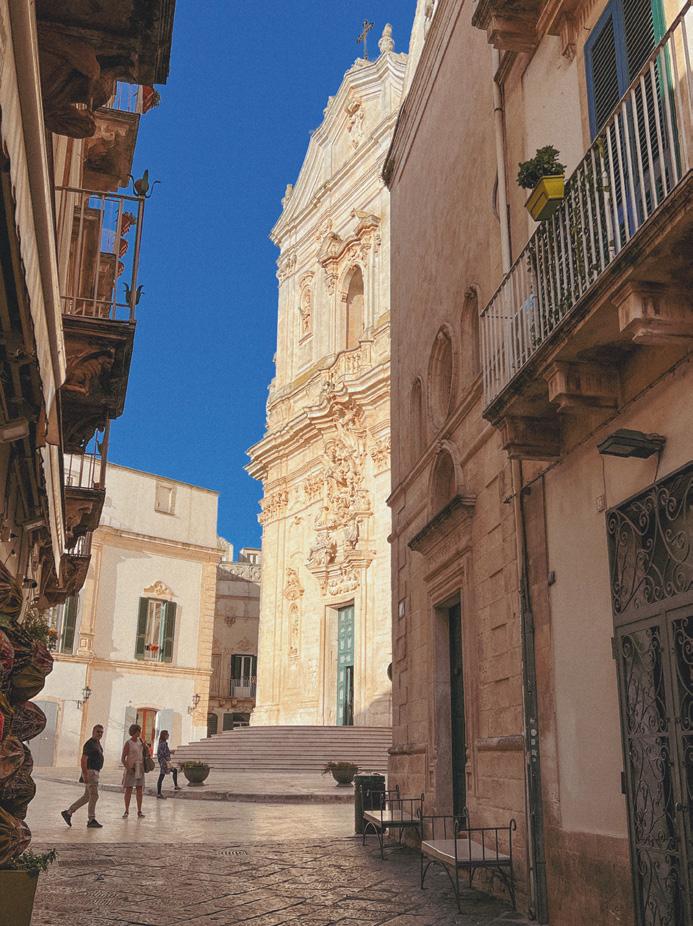
– “PIAZZA MARIA IMMACOLATA È IL SIMBOLO DEL PAESE, CON LA SUA FORMA CONCAVA ASSOMIGLIA A UNA GIGANTESCA CONCHIGLIA DI MARE, APPRODATA SULLA TERRA PER RIPARARE GLI ABITANTI.” –
